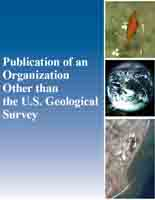A method to obtain remotely sensed grain size distributions from nonplanar granular deposits
Links
- More information: Publisher Index Page (via DOI)
- Open Access Version: Publisher Index Page
- Download citation as: RIS | Dublin Core
Abstract
Constraining the grain size distribution of granular deposits with complex surfaces is difficult with existing approaches. Field and laboratory techniques are time consuming and limited by the maximum grain size that laboratories can accommodate. In this study, we present a new method to identify the coarse fraction of the grain size distribution at a debris-flow fan deposit surveyed with terrestrial laser scanning (TLS) in Glenwood Canyon, Colorado, USA. This method is a novel grain segmentation algorithm developed for application to point cloud data of deposits with complex surfaces and angular grains ranging in size from centimeters to a meter. This approach combines an existing random forest machine learning method with a novel iterative clustering algorithm. We compared the grain size distribution from our algorithm with a Wolman pebble count conducted in the field, and found a root mean squared error of less than 2 cm from the 5th to 95th percentile of the grain size distribution of grains ranging from cobble to boulder sized (6.3–78 cm in our application). Finally, we compared our new algorithm with an existing open-source grain segregation algorithm, and our method outperformed the selected alternative when applied to the debris-flow deposit point cloud.
Study Area
| Publication type | Article |
|---|---|
| Publication Subtype | Journal Article |
| Title | A method to obtain remotely sensed grain size distributions from nonplanar granular deposits |
| Series title | Earth and Space Science |
| DOI | 10.1029/2025EA004376 |
| Volume | 12 |
| Publication Date | June 21, 2025 |
| Year Published | 2025 |
| Language | English |
| Publisher | American Geophysical Union |
| Contributing office(s) | Geologic Hazards Science Center - Landslides / Earthquake Geology |
| Description | e2025EA004376, 18 p. |
| Country | United States |
| State | Colorado |
| Other Geospatial | Colorado River, Grizzly Creek Fire area |


